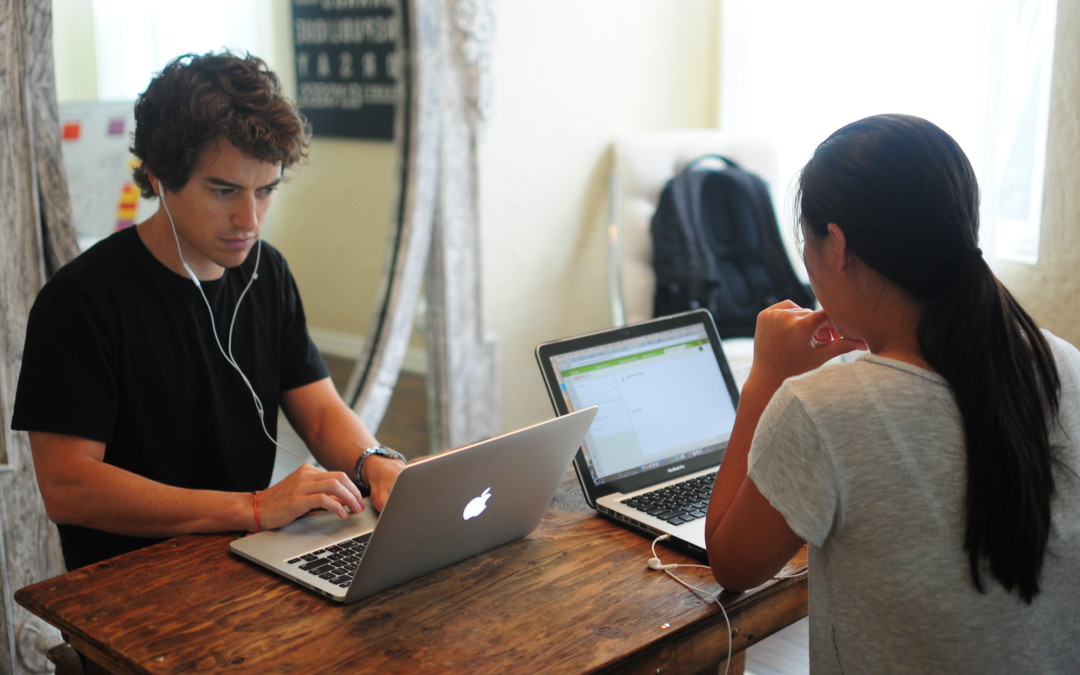Service: How to Start-Up in 60 Days
Posted by: Paige Craig
Posted on 08/22/2015

Posted by: Paige Craig
Posted on 08/22/2015

Michael Schneider started exploring the idea of an “on-demand customer service” app just 60 days ago. Two months in, he has already raised a pre-seed funding round, made his first two hires, helped over 500 customers in 5 countries, and fields inbound inquiries daily from prospective new investors. A startup on this level has achieved so much in a short space of time, and as this progresses even further, the software will advance as well as how it will operate, with an updated business banking account, cloud-based software, etc. being used in a dynamic way.
As the fifth company Michael has started since high school, Service is the culmination of the lessons he’s learned about rapid experimentation and execution. While leaving his prior company, Mobile Roadie, and exploring ideas for his next venture, he committed to test different concepts and see which clicked with consumers.
The spark for Service itself came on a flight in April from Los Angeles to Miami. Michael witnessed a fellow passenger buy a Gogo wifi pass, only to find out that power outlets on the plane weren’t working. With a dying laptop, Michael watched the passenger waste over 20 minutes navigating American’s website to fill out a complaint form, and then do the same on Gogo’s. In an era when you can get a car, food, and dry cleaning on demand with the press of a button, he found it inefficient that consumers still have to waste hours of their time on hold and dealing with customer service issues themselves.
Four weeks later, with the concept still bouncing around his head, he decided to jump in and gauge the potential for an app-based service that seamlessly handles customer service situations on behalf of users.
“The single most important thing is to determine right away if what you’re going to put out into the world is valuable,” says Michael, “Everything is secondary to that. You should know within the first week whether or not what you want to build will have some value.”
It takes a long time to build and refine a product, and many startups dive straight into months of development only to discover upon launch that there was no demand for their product in the first place. Entrepreneurs need to find consumers in their target customer base and immediately test (with concrete results) whether they can provide a substantially better solution to a big pain point those people face.
All Michael needed to launch Service was a logo (to seem like a credible business), a Twitter account (to conduct outreach), and an online form (to field submissions). With a background in digital strategy, he recognized that he’d need to build immediate trust with consumers online in order for them to share the personal information (account log-ins, social security numbers, etc.) that Service needs to act on their behalf. He didn’t want a ‘startup-y’ name that sounds weird to normal people, and it would be clear to anyone viewing the company’s Twitter profile that Service was brand new, so he invested a lot in ensuring the brand looked credible. He paid out of pocket for the best designer he knew to create the logo and he found a way to get the “@service” Twitter handle.
To get started, he built a Squarespace page on the domain www.getservice.io in one hour (buying service.com costs $2MM), with nothing but the logo at the top and a form asking people to submit their email and customer service complaint. Then he took to Twitter searching customer service-related hashtags and mentions of major brands (like airlines and cell phone carriers) and began tweeting at people who were complaining about bad service.
Over that first day, however, he didn’t convert a single person to submit their complaint to the site. Dismayed, he went to sleep that night telling his wife that maybe there wasn’t a big opportunity after all. Then early the next morning he got his first bite. A woman in Chicago named Wendy had an issue with Expedia. He followed up to get her flight information, then called Expedia’s customer service line, and after that, Delta and then Frontier, to negotiate for a refund that Wendy deserved. One hour later, the airlines agreed and refunded her over $400.
Everyone that has a bad experience with Customer service or any issues should reach out to @service! They help! Thanks again!(:
– Wendy Walle (@whendii13) May 20, 2015
It was just one case, but her public praise for Service on Twitter motivated him to journey on. For several more days, around the clock he reached out to hundreds of people on Twitter – all the while testing different ways to pitch Service. He personally handled the cases of everyone who submitted their issue to the website. Six days in, he had 20 submissions and had solved over $1,000 worth of problems for 12 people, the majority of whom also promoted Service publicly on Twitter afterward.
Michael felt he was on to something. There’s still a lot of work to be done in building Service’s tech platform and scaling its operations, but at a foundational level he had validated that his model for Service could provide meaningful value to consumers. And with multiple people having proactively offered to pay him in response, he felt confident that there was a feasible business model.
“Twitter is the best market research tool a startup founder can have,” claims Michael as he talks about the ease of hunting the platform for targets. “Almost any B2C startup can easily find a group of potential customers on Twitter, tweet at them, and gauge the value of their pitch based on the response. Plus for B2B startups you have the ability to directly tweet at VPs and CEOs.”
Early testing with a barebones version of the envisioned product – a “minimum viable product” (MVP) – is critical to better product development and gives both the entrepreneur and potential investors important feedback on the viability of a business idea. Knowing that people really want what a startup is creating also strengthens the team’s motivation, according to Michael, because they can see the tangible impact they’re making among customers.
Once the basic premise is proven and the entrepreneur decides to charge forward, everything becomes a priority simultaneously. There’s immediately an enormous amount of work that needs to be done to keep testing the product, creating a team, raising money, and putting out the many inevitable fires.
As fires go, Michael recalls that Service attracted a troll by the end of his first week: the site didn’t have Terms Of Service or Privacy Policy legal agreements pledging to protect customers’ personal information, and so someone who came across it began aggressively warning people on Twitter that @Service was a scam. Beyond Service’s lack of legal agreements, the whistleblower was also writing that Service was based in India because – although it’s popular within the tech community as a reference to “input / output” – the Top-Level Domain (TLD) “.io” is technically the TLD for the Indian Ocean. Michael scrambled to add a standard privacy policy to the site, and had to reassure customers that Service was indeed a credible, US-based operation.

He also received a perfectly timed email from a UPenn student named Tiffany whose class he had once spoken to. She was disappointed with her summer internship at another tech company and wanted advice on what to do. Michael told her about Service and his need for more hands on deck, and within two days she joined him handling Service issues from his kitchen table around the clock.
For 3 weeks, Michael and Tiffany worked from Michael’s house handling customer service issues while refining their process and outlining how Service would ultimately work. They used Zendesk as their temporary software solution to track all customer service cases and had to learn how to represent customers effectively without impersonating them.
“For whatever reason, we had a lot of early traction from Twitter users in the UK,” says Michael, “it accounted for half of our submitted cases.” When dealing with UK companies, Michael and Tiffany found they legally had to get the customer themself to authorize them as their representative.
They also quickly discovered how different the culture of customer service can be across industries and countries: “while dealing with companies in the US and UK is a familiar process, dealing with companies in countries like Brazil is quite different…managers aren’t expected to care that someone had a bad experience or think it fair to reimburse them.”
Starting Week 2, Service also began running $20-30 per day in paid ads on Twitter tracking the #badservice hashtag to expand their reach. Sticking with Twitter as their only outbound marketing channel has proven extremely cost efficient. “Twitter has given us an endless supply of cases to solve, plus it’s enabled us to quickly build legitimacy,” says Michael, noting that new visitors to their Twitter profile now see all of Service’s Twitter conversations, showing off the company’s positive track record.
Entering Week 3, Michael shifted to focus on raising initial capital to provide them with runway and enable them to hire a couple additional people. With his background as a serial entrepreneur and with Service’s initial traction, he raised over $500,000 in just three days. Investors this early, he notes, are investing based on the qualities of the founder rather than the metrics, and his rapid execution over the previous couple weeks helped him stand out as an entrepreneur who moves fast.
Even following the fundraise, he is still spending a lot of his time personally handling customer service cases and insists on keeping all the early customer service agents he hires in-house. “I think outsourcing before you truly understand the service you’re providing is a really bad idea,” he explains, “the worst thing you can do is outsource your core value proposition before you really understand the ins and outs of it.”

Service only moved into office space 5 weeks after launch once the third team member joined and candidates were being interviewed for other openings. He’s adding several more customer service agents to handle the increasing demand, using LinkedIn to identify highly-qualified candidates at other companies.
He says his biggest fear right now is suddenly getting mainstream press coverage or having a celebrity tweet about them and sending too much traffic. “We need to ensure everyone has a great experience using us…we can’t be slow to respond,” he explains, “The day consumers need Service for Service, we’re dead.”
While difficult, Michael says launching Service as a scrappy startup and having to handle customer service calls himself has been really gratifying. At end of day, he can measure who he helped and how much it meant to them – yesterday the team received a delivery of flowers and beef jerky from someone they helped – and it’s a straightforward enough concept that even people outside the tech community immediately understand it. “It’s the first company where my mom gets what I’m doing.” he remarks, “That’s really cool.”

Paige invests in brilliant founders from across the US, using his Outlander Founder Framework to drive returns in the top 5% of VCs globally.
As we explore the unknown of each new investment, our Field Guides are where we document all that we learn along the way.
So, whether you’re actively raising, trying to break into VC, or interested in our game-changing portfolio, our Field Guide's got you covered.
Sign up now for exclusive access to funding opportunities, events/resources from our network of experts, updates from our portfolio, and more!